Picking off from where we ended up in our last blog post (click here to read Part 1) let us move from “Konoha-gakure” to “Suna-gakure” to unearth even more connections between Naruto and India.
Gaara
Everyone knows Gaara’s tragic past, particularly the controversies with his family, but probably not everyone remembers that his mother, Karura, named him after Asura, the Hindu demigods.
His name comprises of three kanjis, namely: self (我), love (愛) and the ra (羅) part of shura (which -no surprises- is the Japanese word for asura), effectively taken from the phrase我を愛する修羅 (ware o aisuru shura), which means the demon who only loves himself. The ra could also be taken from 魔羅(mara), the ‘personification of the forces antagonistic to enlightenment.’
Speaking of which, Karura’s name shares the very same “ra” kanji character. Incidentally, Karura written as 迦楼羅 (karuura) is the transliteration of Garuda.
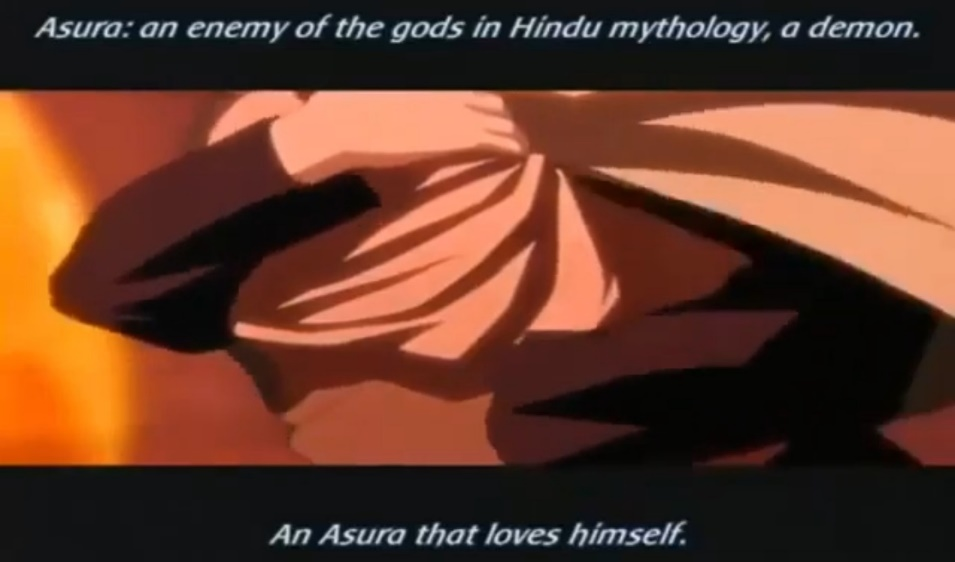
Credits: Kishimoto Masashi (Naruto anime)
Yashamaru
Gaara’s maternal uncle and the Fourth Kazekage’s right-hand man, Yashamaru’s name comprises of three kanji characters: 夜叉丸. The first two, 夜叉 (Yasha) refer to Yaksha, an ancient class of guardian-spirits, which are taken from Indian mythology. The Hindu, Buddhist and Jain versions of the Yaksha usually portray them as having a dual personality. Yashamaru had a benevolent side: he was always warm-hearted and cared immensely for Gaara. And although he was the only person who understood Gaara during the latter’s turbulent childhood, his scripted ‘betrayal’ of the Jinchūriki could be a reference to the “dark side” of Yaksha. Pretending to be harbouring a murderous grudge towards his nephew, he was willing to sacrifice his own life and destroying his lovable relationship with Gaara, to test his control over Shukaku.
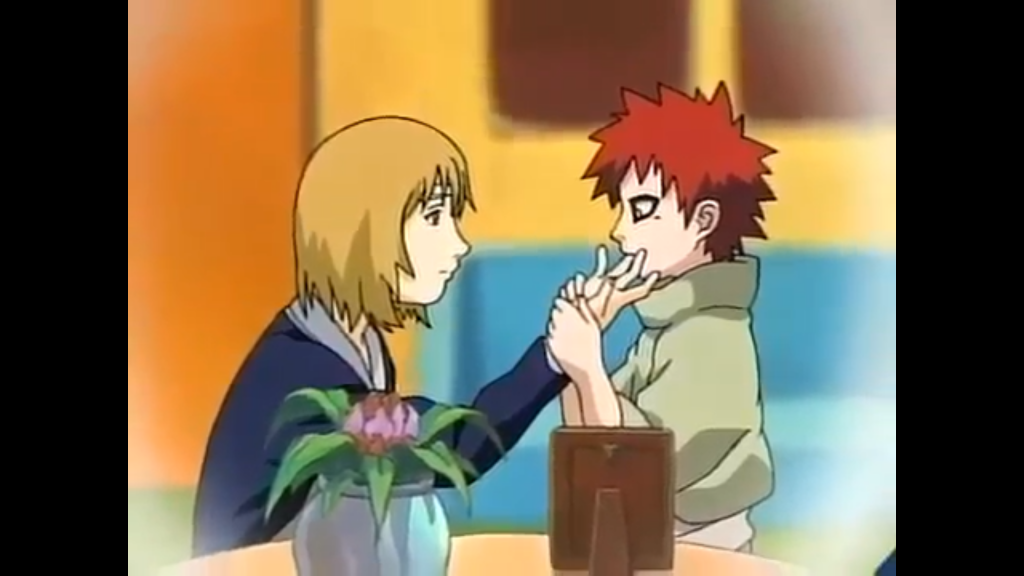
Credits: Kishimoto Masashi (Naruto anime)
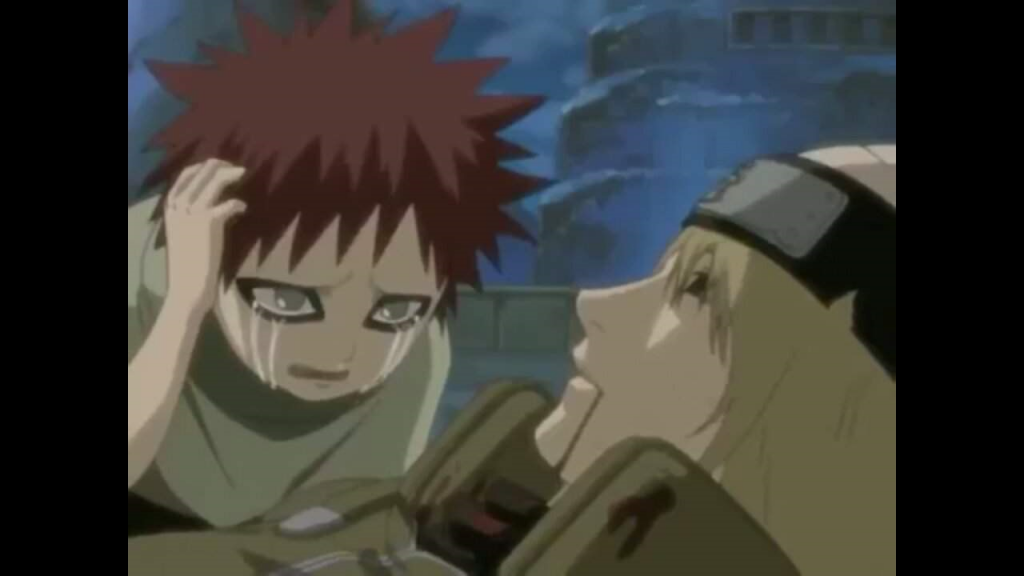
Credits: Kishimoto Masashi (Naruto anime)
Chiriku’s 1000-armed murder
Also called the ‘gift of the gods’ by Kakuzu, the Welcome Approach: Thousand-Armed Murder Jutsu (来迎・千手殺, Raigō: Senjusatsu) is a technique used by the monks of the Fire Temple. In the anime, we see it being used by Chiriku and later Asuma. The spirit which appears behind the user of this jutsu is that of the Amida Butsu (अमिताभ Amitābha in Sanskrit).Many also draw striking resemblances to the Hindu Goddess Durga, given that the spirit has several arms, and to Goddess Lakshmi, since it is seen to be resting on a lotus.
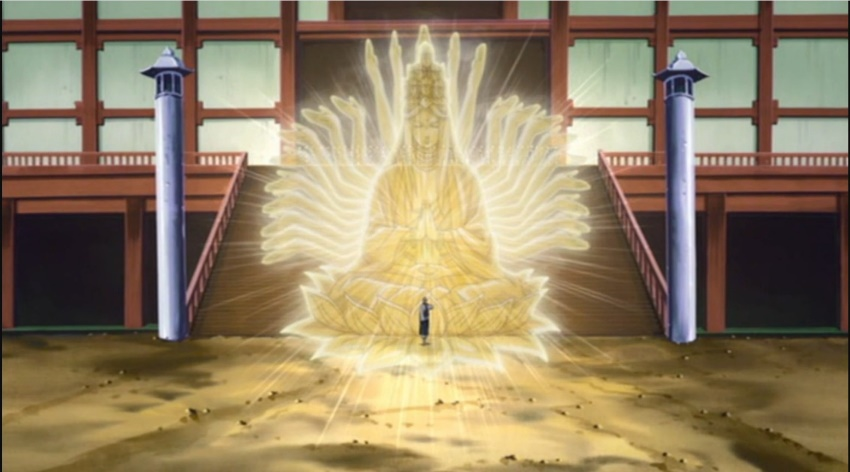
Credits: Kishimoto Masashi (Naruto Shippuden anime)
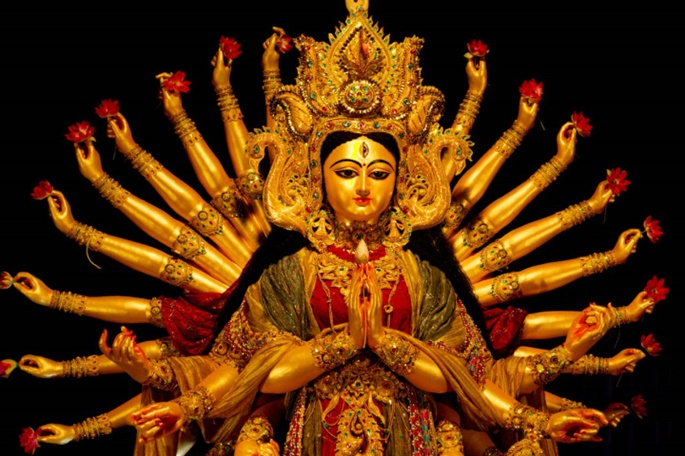
Credits: Matthias Rosenkranz
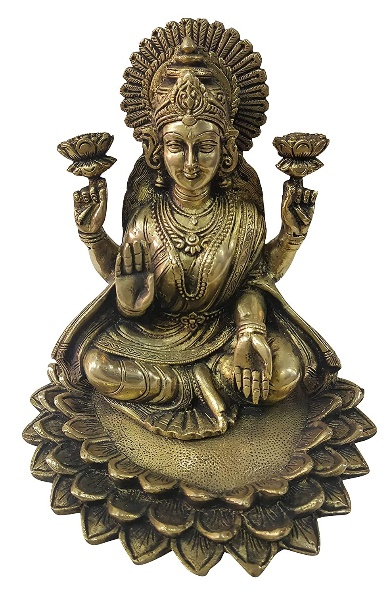
Credits: https://www.amazon.in/
Senju
Hashirama, Tobirama, Tsunade – a number of Hokages came from the Senju clan, arguably the strongest (perhaps only rivalled by the Uchiha Ichizoku) and well-known for its members mastering several skills, as underlined by the name and although the name has died out, their philosophy of the ‘Will of Fire’ continues to exert a strong influence over Konoha. The immense depth and expanse of their proficiency are not only highlighted by the very name Senju (千手), which means “a thousand skills/hands”, but also by their clan symbol, the vajra.
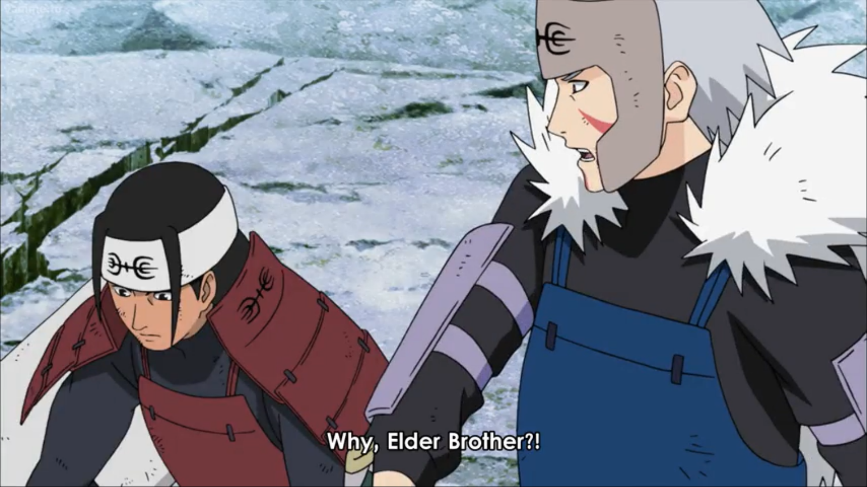
Credits: Kishimoto Masashi (Naruto Shippuden anime)
A Sanskrit word, vajra refers to diamond as well as thunderbolt. Its symbol, therefore, denotes both indestructibility (of a diamond) and irresistible force (of a thunderbolt). Signifying firmness of spirit and spiritual power in Buddhist, Jain and Hindu traditions, this powerful weapon very aptly finds its place as the symbol of one of the strongest and most influential clans.
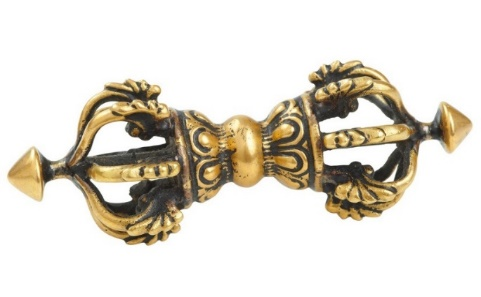
Credits: blog.sivanaspirit.com
Hashirama’s Jutsu
A number of the First Hokage’s legendary jutsu take inspiration from Hindu and Buddhist mythology. For instance, Sage Art Wood Release: True Several Thousand Hands (仙法木遁・真数千手 Senpō Mokuton: Shin Sūsenju) creates a gigantic many-armed wooden statue, much bigger than a full-sized Kurama as well as a Complete Body Susanoo, which offers excellent offensive and defensive capabilities to the user. This formidable Senjutsu seems to be influenced by Avalokiteśvara (known as 千手観音, Senju Kannon; meaning the “Thousand-Armed Kannon”), who was blessed with a thousand arms by Amitābha to assist him with his goal of helping the suffering. Tobi has also used his modification of this jutsu called the Kanzeon Lotus (観世音蓮華王Kanzeon Renge-Ō), where Kanzeon is a more formal name for Kannon.
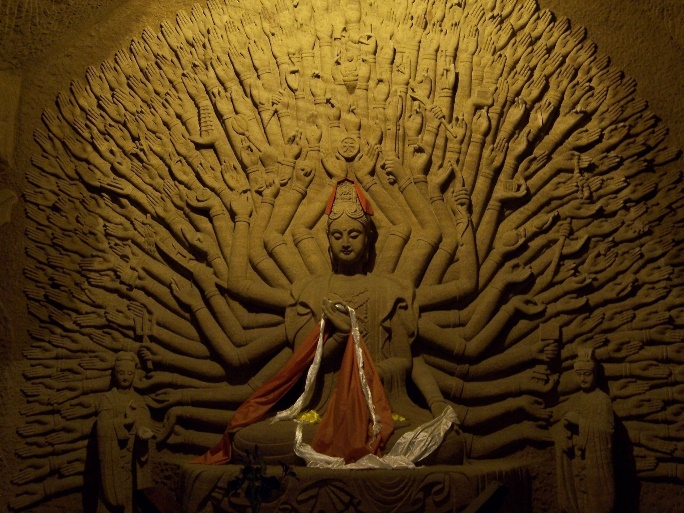
Credits: McKay Savage
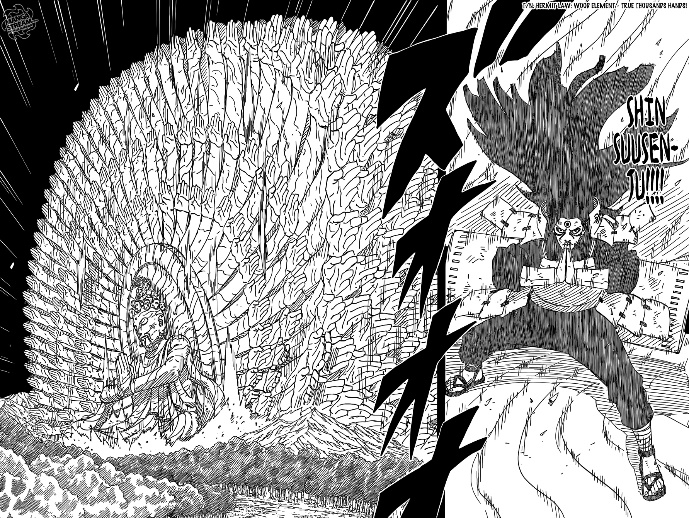
Credits: Kishimoto Masashi (Naruto Vol65, Ch621)
To increase the destructive power of Shin Sūsenju, Hashirama, as well as Tobi, have been seen to use the Top Transformed Buddha (頂上化仏 Chōjō Kebutsu), which enables the thousand arms to be used to deliver endless punches. Kebutsu, literally meaning “Transformed Buddha”, is a manifestation of a Nyorai (如来 meaning “thus come”; translated from the Sanskrit word तथागत tathāgata) that has transformed into another body and is represented along with an associated Buddha or bodhisattva. Chōjō Kebutsu too can be seen as a transformation of the Shin Sūsenju.
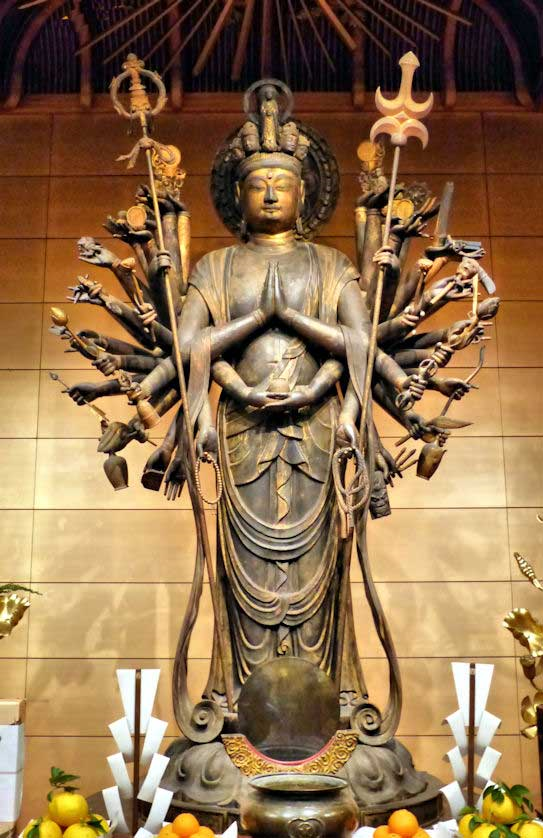
Credits: https://japanvisitor.com/
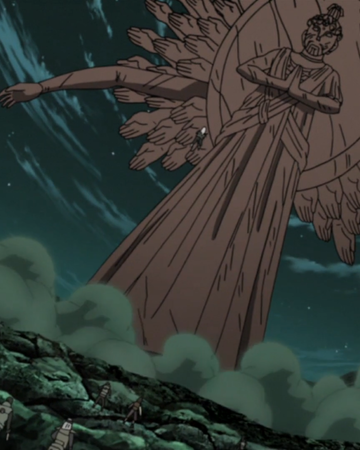
Credits: Kishimoto Masashi (Naruto Shippuden anime)
The enormous wooden dragon created in Hashirama’s Wood Release: Wood-Dragon Technique (木遁・木龍の術Mokuton: Mokuryū no Jutsu) is purportedly inspired by Makara (Sanskrit: मकर), a mythical sea-creature in Hindu mythology. Makara means “sea dragon” or “water-monster” in Sanskrit and dragon in Sinhalese, and is an important figure in Sinhala Buddhist culture.
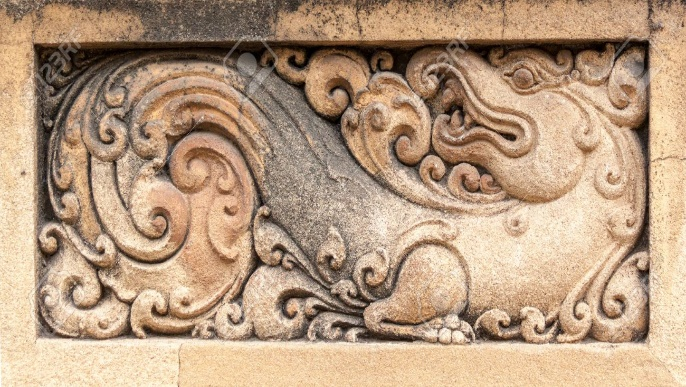
Credits: nilanewsom (https://depositphotos.com/)
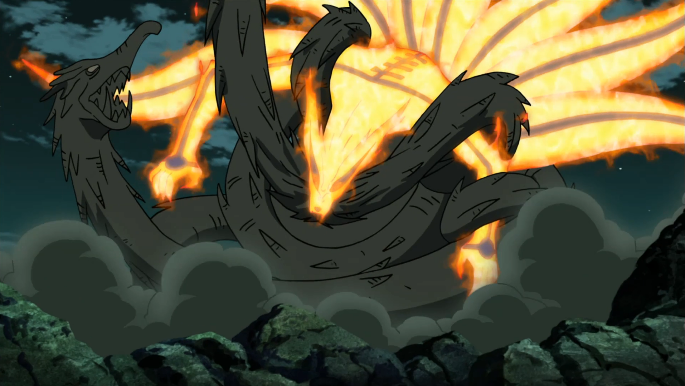
Credits: Kishimoto Masashi (Naruto Shippuden anime)
Gedo
Do you remember what container was used by the Akatsuki for storing the tailed beasts extracted from their respective juubis? (Hint: it was the husk of the Ten-Tails!)
Called the Gedo Statue (外道魔像, Gedou Mazou), meaning the Demonic Statue of the Outer Path, denotes opposition to the conventional Buddhism teaching of Naidou (内道), literally meaning the “inner path”. The term “Gedou”, derived from the Sanskrit word “tīrthika”, refers to an outside way to enlightenment, a doctrine which is distinct from orthodox teachings, thereby alluding to the diabolical nature of the Demonic Statue. Not to mention, the Gedou Mazou sits atop a lotus, a form of Hindu iconography quite repetitive in Narutoverse.
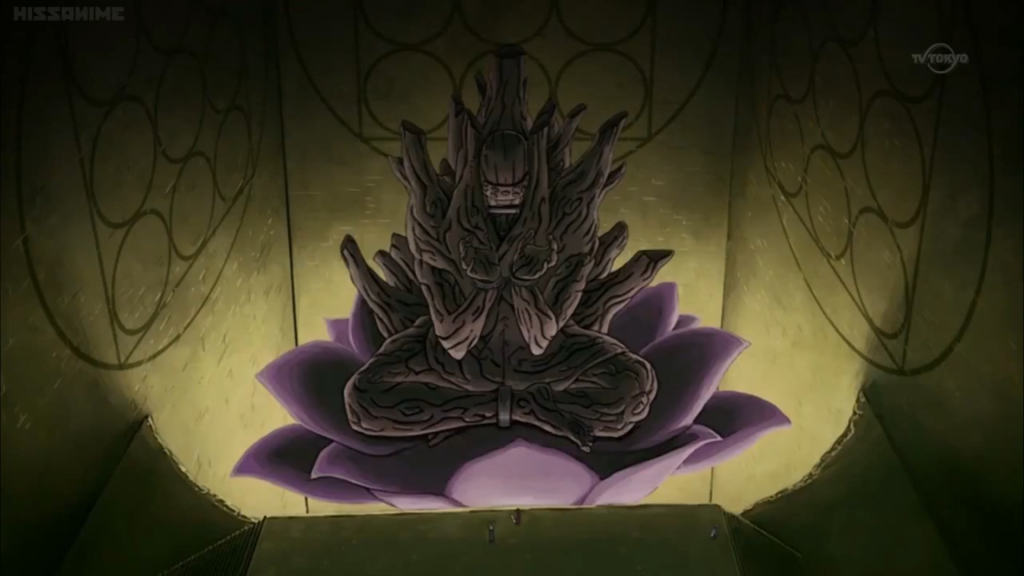
Credits: Kishimoto Masashi (Naruto Shippuden anime)
Part.3 is here.

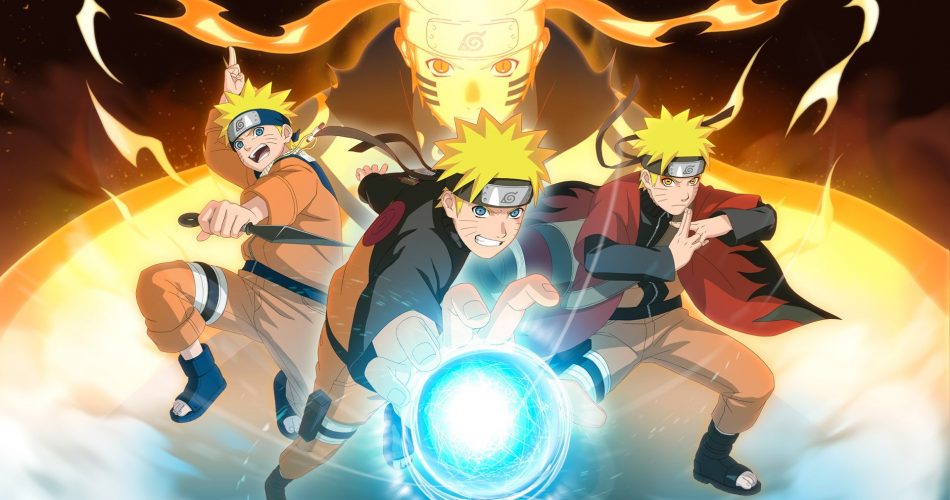
Comments